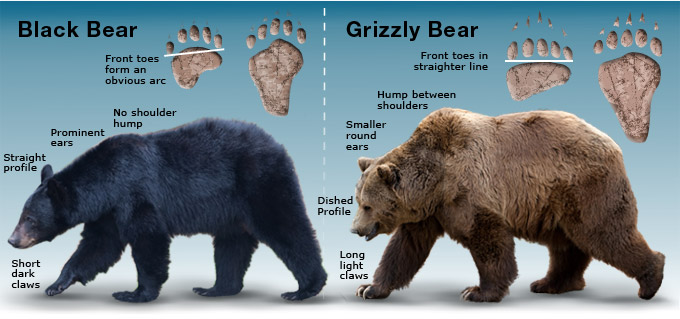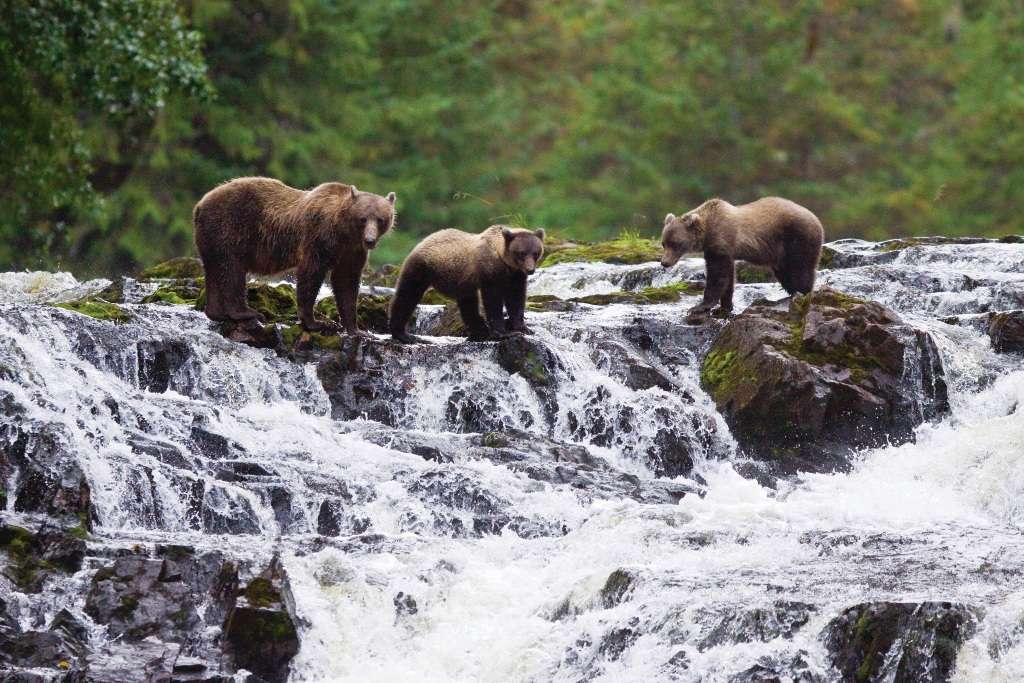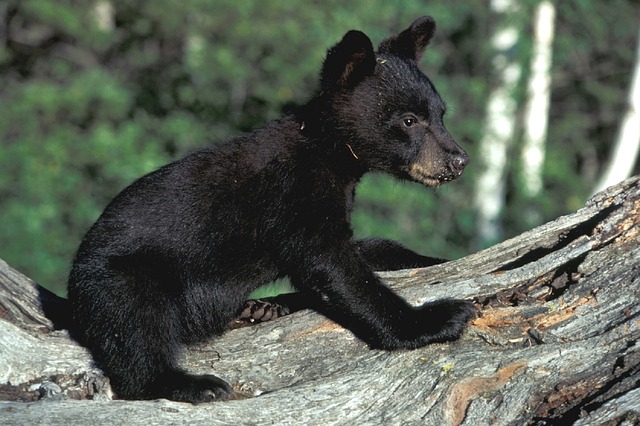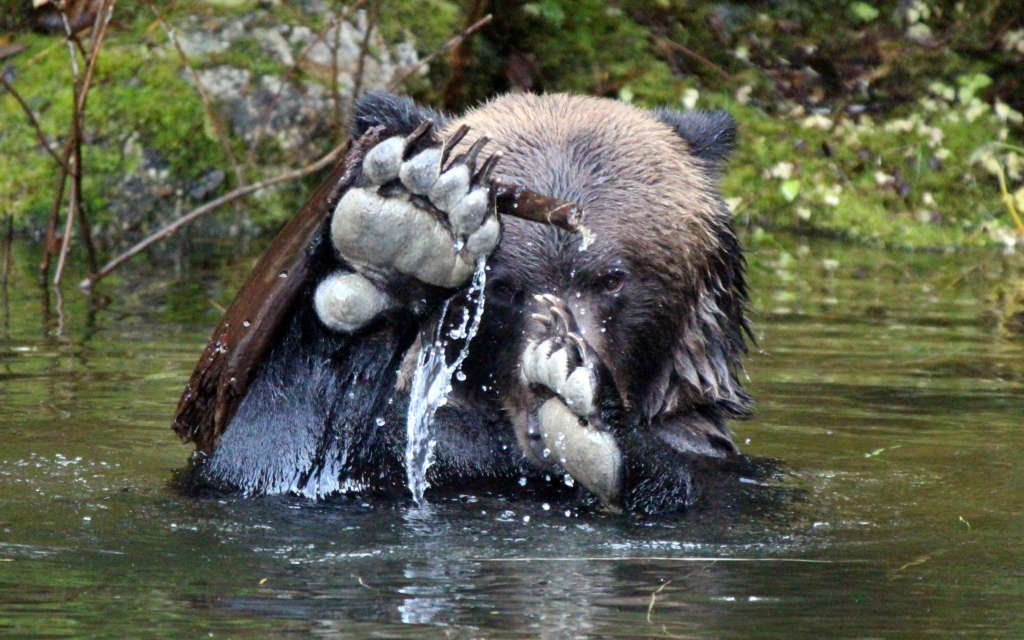Do you know your North American bears?

You may not know – that not all black bears are black and not all grizzlies are “grizzled” – so here is a little run down on the bears of North America so you can wow them on your next trip to North America

The Brown Bear (Ursus arctos) and the Black Bear (Ursus americanus) are the two most abundant species of bears in America, both are successful predators, but only the brown bear is an apex predator.
The grizzly bear (Ursus arctos horribilis), or the North American brown bear – a subspecies of Brown Bear, has the largest population in all North America. As their Latin subspecies name suggests, horribilis, the grizzly bear is far more fearsome and dangerous than an average bear. The American black bear has attacked far more humans than the grizzly bear, but this is due to larger numbers of black bears that live in close proximity to humans. Furthermore, American black bear attacks are rarely serious, and they will usually only attack due to hunger.

The grizzly bear will attack in any condition, whether they are hungry or perfectly satiated. If a grizzly is surprised by a human that is too close, it is far more likely to attack than the American black bear. The biggest risk to humans is female grizzlies with cubs, a mother grizzly defending its cubs. If you see a grizzly cub stay far away, the mother is never far. Also, unlike American black bears, grizzly attacks are extremely vicious. A grizzly will fight a human as if it were another bear, rising on their back legs and biting towards the lower jaw. When fighting another bear, this would disarm it, stopping it from biting back. But a grizzly’s bite force is stronger than even a tiger, at 1160 psi it could crush a bowling ball in an instant. A human is just incapable of providing any meaningful defence to this power, and often they will have their skulls crushed. [1]
To survive a grizzly attack, the best advice is to fake your death. As horrifying as it sounds, a grizzly will continue to attack until it feels the threat is neutralised – overpowering a predator of this size is impossible and outrunning a bear that can reach speeds of roughly 55km/h is impossible. [2] To survive a black bear, fight back. Appear as large as possible and try hit the nose or eyes of the bear. Back away from the bear, but never run – if you run you appear weaker to the bear and it may continue the attack.[NP1]
Visually grizzly bears and black bears can be quite similar. The colour and size can be misleading, a black bear doesn’t always have a black coat and a grizzly bear will not always have a brown/blonde coat. Because of the difference between the size of male and female bears, it can be easy to mistake a female grizzly (approx. 200-350 pounds) for a male black bear (200-300 pounds). The most distinguishable feature between the bears is the muscle around their shoulders. A grizzly bear is more adapt at foraging, their claws are much longer for digging and so their shoulder muscles are heavily developed. They will have a hump, whereas a black bear will not have this hump. Their faces are distinctly different too, a grizzly has a concave face profile whereas the black bear has a straight profile. The black bears features are more dog-like, with short fur around the face. The grizzly has much fuzzier, longer fur, with eyes quite close together. The ears on a grizzly will also appear much smaller and round, while black bears have larger, more pointed ears. [3]

Their diets and their habits are nearly identical. Black bears will live throughout most of the US and Canada, except for the southern and central states. Grizzlies prefer to only live in the northern areas of the US, as well as throughout Canada. Their diets consist of the same things, they are both omnivores and get most of their food from surrounding flora and fauna, but both will hunt fish and larger game given the opportunity. They will feed for up to 8 months, preparing for their hibernation in winter. During the winter they will stay in their caves, reserving energy. Because of this hibernation, spotting either of the species in winter is exceedingly difficult. If you want to see a bear in the wild, spring and summer are ideal, where they will forage around water sources like rivers. We recommend travelling with a wildlife expert and to take care around any bear, black or brown, to protect them as well as you.

Bibliography:
- [1] Facts: Casey & Brutus: Grizzly Encounters – National Geographic Channel – UK. Natgeotv.com (2010-04-20). Retrieved 27 January 2020.
- [2] https://www.mnn.com/earth-matters/animals/stories/how-to-survive-a-bear-attack
- [3] http://www.bearsmart.com/about-bears/know-the-difference/

